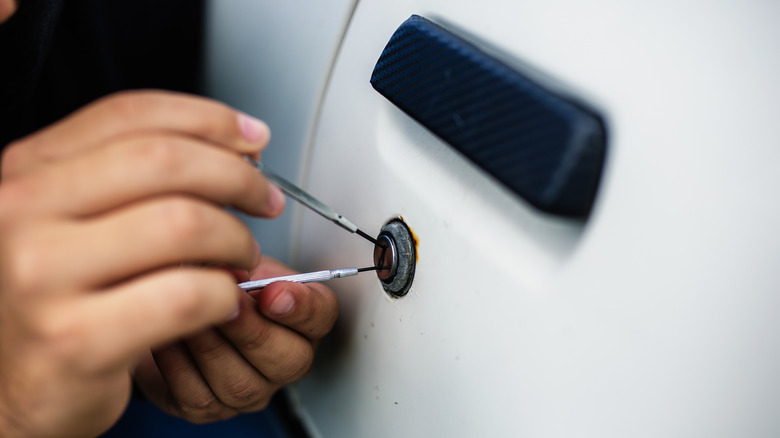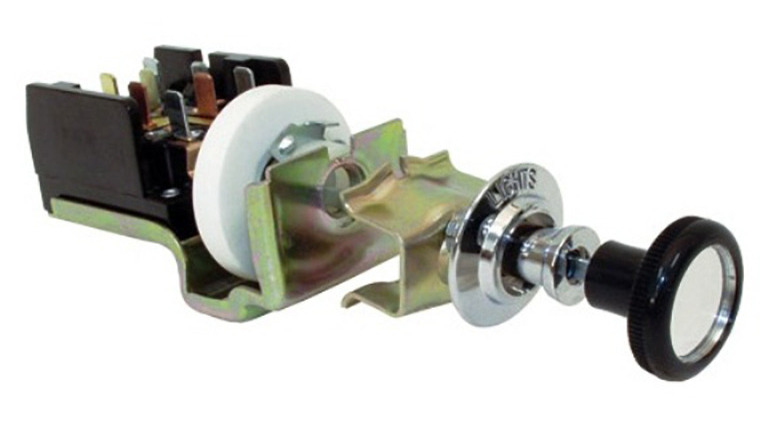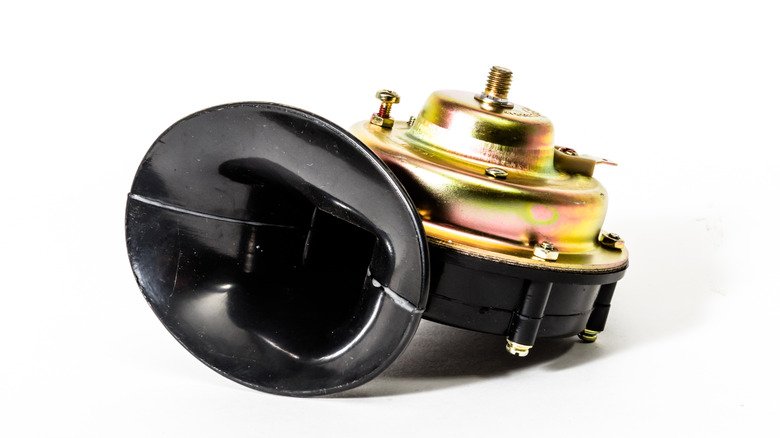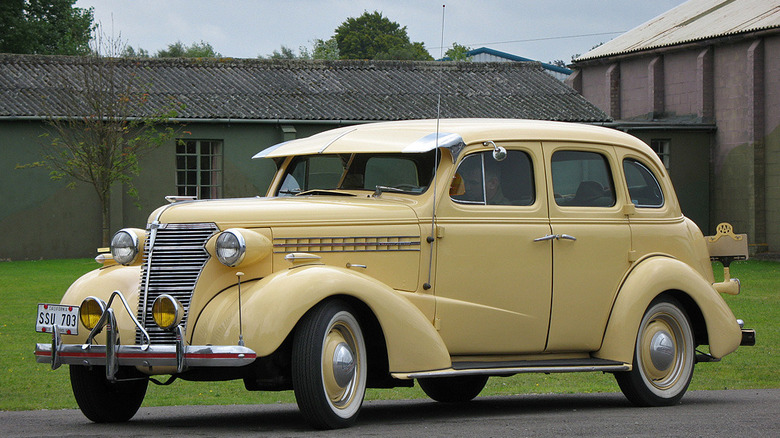5 Clever Ways To Prevent Your Classic Car From Being Stolen
We may receive a commission on purchases made from links.
According to the National Insurance Crime Bureau, more than a million cars were stolen in 2022, a 7 percent increase from the year before. The Dodge Charger SRT Hellcat is the most frequently stolen car, but about 46 % of all stolen cars are recovered locally. Classic cars are a sad outlier, however. These cars are often stolen with a buyer already lined up, and quickly shipped overseas. Ted Saraf served with the Pasadena, California Police Department for 30 years and is now an advisor for Lojack, which makes a popular vehicle recovery system. He told The Boston Globe's online outlet Boston.com that more than 400 classics have been stolen from the Los Angeles area since 2008, and only six of them were recovered.
Saraf said classics are often targeted by professional criminals who stalk their victims carefully. "The thieves will go to car shows and find the exact car they need. They'll take photos of it to show their buyer, and follow the owner home or to his garage or warehouse. Then they'll break in at night. Locks, fences, and gates are no problem for them."
Fortunately, there are many tactics classic car owners can use to protect their precious vehicles. We've already shown you how an Android phone can be employed as a Lojack-like tracking device, but here are several other ways to keep thieves from snagging your precious classic and shipping it off to an unscrupulous customer in Europe or Asia.
Stealth kill switch
Under-the-hood kill switches are a common anti-theft deterrent but are well-known to thieves, who will often pop the hood and check for them before trying to steal a car. A good way to frustrate would-be criminals is to install a hidden kill switch on the dash or floor in the form of a common headlight, toggle, or dimmer switch. If this is the route you choose, you'll want to make sure you consult the wiring diagrams for your vehicle and select a switch that can handle the current for the circuit you choose to interrupt. This will ensure you don't end up melting the switch or causing a fire by sending too much juice through it.
An excellent option is an inconspicuous marine-grade toggle switch, like the one that sells for $9.99 for a 4-pack at Amazon. This particular switch comes with a waterproof rubber cover and has a rating of 15 amps, which is more than enough to handle the draw of the ignition or fuel pump circuits of most engines. You'll also want to make sure you use big enough wire to handle the current: 12- or 14-gauge wire will be sufficient, depending on the length of the run (it's never an issue to use thicker wire than necessary; better safe than sorry). If you wire the switch through a relay, you can even use a low-amperage switch like a horn or radio button to work as a kill switch.
Ad-hoc alarm system
Car alarm systems can cost hundreds of dollars and professional thieves are savvy about bypassing them, but with a little bit of clever MacGyvering, you can rig up an inexpensive and stealthy alarm system that many thieves may not even notice. You can run a wire from the hot side of your car's ignition circuit to a toggle switch, and another from the "on" side of that switch to a horn mounted under the hood. When you are ready to drive the car, you'll know to flip that switch to the "off" position so you can drive in peace, but a thief won't be aware of this system's existence. If someone tries to hotwire your car, the horn will sound, alerting you and your neighbors to their nefarious doings. This is a simple solution that will cost only a few dollars and a couple of hours of your time, but could save your vehicle from ending up on a shipping container or in a chop shop.
Own a difficult-to-drive vehicle
Fewer than one in five Americans are able to drive a manual transmission vehicle, so simply owning a classic car with a stick shift is enough to keep most thieves from starting it up and driving it away, at least in the United States. A more antiquated version of the manual transmission is the column shift, or "three on the tree," where the shift lever is on the steering column instead of to the right of the driver's knees. This mechanism was common on cars in the 1940s and '50s but was eventually phased out in favor of floor-mounted shifters.
Many thieves might not be able to back a column-shift vehicle out of your driveway, making this type of transmission a built-in anti-theft device. From 1938 to 1948, Chevrolet vehicles, like the '38 Master Deluxe pictured above, used a floor-mounted foot starter switch. This button-style starter will likely frustrate most thieves, who will waste time looking frantically around in the dark for a keyed or pushbutton ignition switch like the ones found on most classic cars. A 1954 Austin-Healey has a few standard "anti-theft" features: no outside door handles, a push-button starter, and a stick shift transmission.
[Featured Image by Brian.Burnell via Wikimedia Commons| Cropped and scaled | CC-By 3.0]
Parking strategies
Another way to protect your classic car from theft is to park it somewhere that makes it difficult for thieves to get to it or extract it. If you have another vehicle, parking it in a way that prevents thieves from driving or towing your classic away is a simple and cost-effective anti-theft strategy.
If your car sits alone in your garage, stacking items behind and around it will add to the time thieves have to spend getting to your car and getting it off your property, and the added noise they make in the process might be enough to alert you to their presence and save your car from being stolen. Simpler strategies — like just locking your garage, alarming the door, or even removing the outside garage door handle — can also help keep your car (and tools) safe from theft. You may not always be able to keep intruders off your property, but sometimes just frustrating or delaying them for a while is enough to protect your beloved classic.
Removing key parts
Most classic car owners are handy with tools and are comfortable removing and replacing parts from their vehicles. Pulling a few key components from your car when you park it is another great way to prevent it from being stolen. This can be as quick and simple as pulling the wire that runs from the ignition coil to the distributor (effective unless a thief happens to be carrying one in their trunk) or removing the fuses and/or relays that supply power to the fuel pump or ignition circuit.
Some owners even choose to pull their steering wheels or remove the gear shift lever when parking their cars. You can also take the lug nuts off of one or more wheels. This won't prevent a thief from starting your car and driving it away, but they won't get far, and most of us would much rather repair a damaged axle or suspension than replace a beloved classic car. If this is the strategy you choose, it's a good idea to employ a simple reminder like a dash-mounted Post-It note or piece of string on the steering wheel to remind you to replace the lugs before you drive your car.





